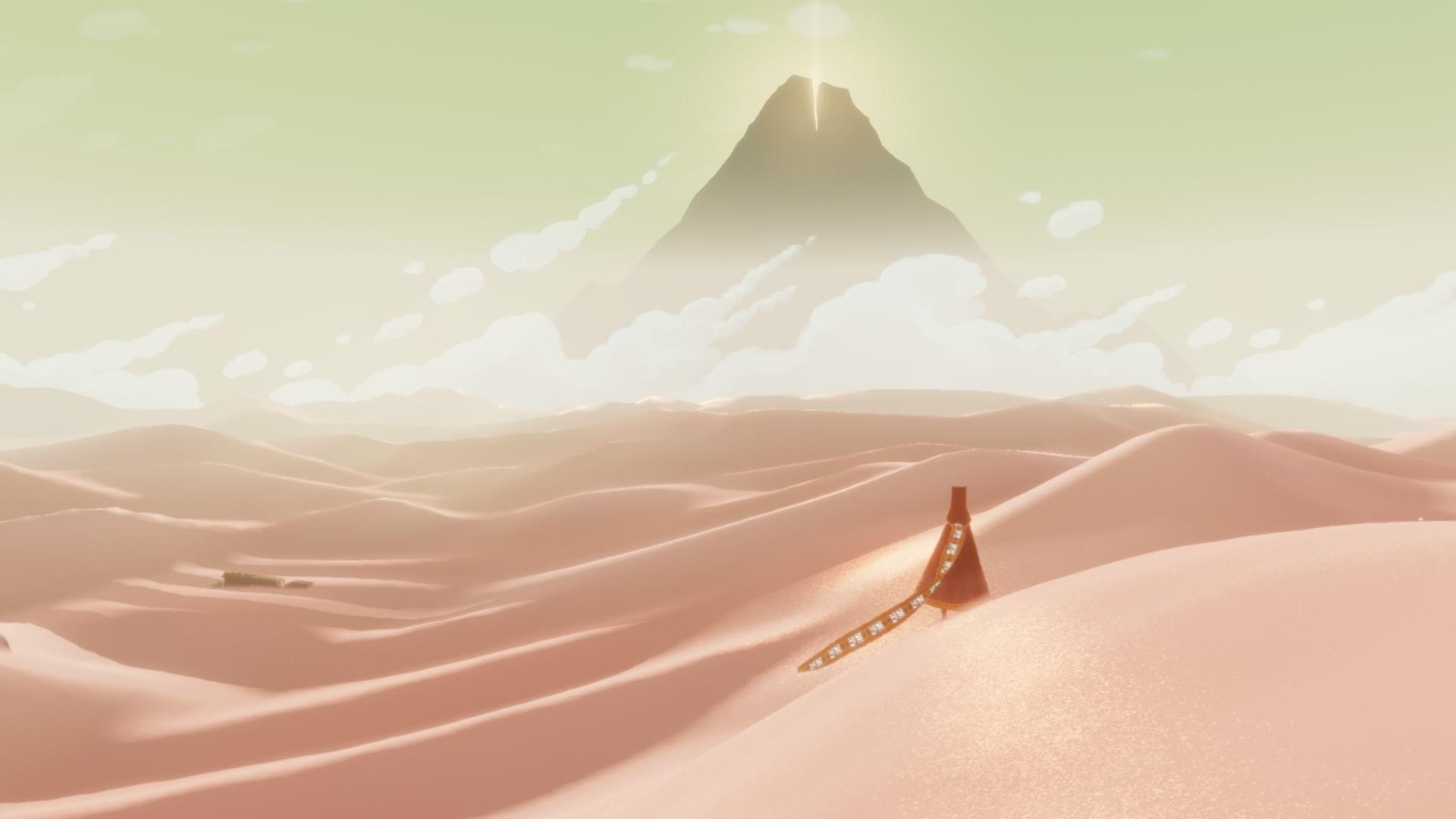I played Journey on my PC with my keyboard and mouse. Journey was published by thatgamecompany in 2012, and is available on almost all platforms.
Journey is a spiritual experience, as I think walking sims tend to be. However, this effect is magnified by the quality and importance of the music and the absence of any speaking lines. There are also no other players for the beginning of the game, only some possibly sentient ribbons that accompany you. In isolating the player character, and only giving them a limited skillset, the walking becomes the most important thing. Movement is the only thing you have power over, which makes it your sole focus. Like the title implies, the journey is the critical part, and the end almost doesn’t matter after that.
This game is relatively short, I think I played it through in a little over two hours. There isn’t really an introduction, but the player only has three things they can do, one of which is introduced later. The limited option makes gameplay simple and straightforward: where do you want to go? And all of the skills that your character is given highlights and supports that goal.
At some point in the game, you are connected with another player, but if you’re like me, you don’t necessarily realize it’s actually someone else at first. However, you have to keep close to this player, and working with them makes the second part of the journey easier. While there’s still no speaking, you have a note that you can make, and my partner and I sometimes did it just for fun with each other (or at least that was what I was doing). It took me a while, again, to realize that they had a different note with a different symbol than me. The symbolism of being alone to find your path, only to find someone else there with you is not lost on me. And neither is the fact that by moving in a particular way or making nonverbal noise at another, you can communicate and interact without words. In being close to one another, you can also recharge your flight powers. And by making your note near other ribbon beings, you can charge them as well.
I’m certain there’s more significance to the symbolism that is lost to me in this game, but what stands out to me is that the creators really wanted to emphasize the importance of movement and connection with one another. They allow you several different ways to move, either sliding down sand hills, normally walking, or flying, and the only skill you have aids that: the note that you make activates ribbons that charge your flight power or directly lift you up into the air. The challenges around are all designed to make you think about how to move differently as well. You learn how to make ribbon bridges to connect the fallen stone ones, and most glyphs are hidden in such a way that allows you to exercise your movement powers creatively. I know I spent about ten minutes trying to get on top of a tower to get a glyph, only to realize (after being annoyed and spamming my note) that you can call the ribbons to lift you up. Even the end sequence emphasizes movement, as you’re allowed unlimited flight while in the golden beams, and in the credits you become a falling star through all the challenges you’ve overcome.



